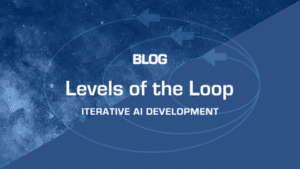Knowledge graphs are powerful tools for representing and integrating information from diverse sources, and can be used to support a wide range of applications in life sciences. Using natural language processing, knowledge graphs can transform unstructured text like doctor’s notes, scientific literature, and patient-reported outcomes into a gold mine of real-world data. By representing knowledge in a graph format, it becomes easier to identify relationships between different concepts and process data into information.
- Precision medicine: Knowledge graphs can integrate and analyze data from diverse sources, such as electronic health records (EHRs), clinical trials data, and data from wearable devices, mobile health apps, and social media, to support precision healthcare research. By identifying relationships between different data points, knowledge graphs can help identify evidence-based precision treatment options for patients.
- Patient-centered care: Knowledge graphs can integrate and analyze data related to patient-centered outcomes research, such as patient-reported outcomes (PROs), quality of life data, and treatment preferences, to support patient-centered research and personalized medicine.
- Health information management: Knowledge graphs can help improve health information management by analyzing data concerning information exchange protocols, governance, data cleaning, and standardized data formats and terminology. This can help reduce the amount of data that remains trapped in silos and improve cross-system communication. Also, by representing this information in a graph format, researchers can easily identify relationships between different data points and use this information to generate new hypotheses and insights.
Subscribe for more updates about life sciences applications for AI
- Clinical decision support: Knowledge graphs can represent clinical knowledge, such as disease symptoms, patient demographics, and treatment guidelines, to support clinical decision-making. Clinicians can use knowledge graphs to easily visualize relationships between different data points and inform their decisions about patient care.
- Powering new discoveries: Knowledge graphs can support the invention of new drugs, therapies, and medical devices and more by integrating data from diverse sources, such as chemical structures, gene expression data, clinical trial results, and genomic data. By identifying relationships between different data points, knowledge graphs can help identify new research questions and support interdisciplinary collaborations.
- Disease diagnosis and management: Knowledge graphs can represent and integrate patient data, such as medical history, laboratory test results, and imaging data, to support disease diagnosis and management. This can also be applied to underserved areas like chronic disease, mental health, and rare diseases.
- Medical imaging: Knowledge graphs can integrate and analyze medical imaging data, such as MRI and CT scans, to support medical imaging research and diagnosis. By representing imaging data in a graph format, researchers can identify relationships between different data points and use this information to develop new imaging techniques and algorithms.
- Patient safety: Knowledge graphs can analyze data related to patient safety, such as adverse events, diagnostic errors, and drug interactions, to identify safety concerns and help reduce potential harm to patients. They can also incorporate regulatory data, helping to ensure compliance.
- Health technology assessment: Knowledge graphs can integrate and analyze data related to health technology assessment, such as cost-effectiveness data, clinical efficacy data, and patient outcomes data, to support health technology assessment and inform reimbursement decisions.
- Health workforce: Knowledge graphs can integrate and analyze data related to training, employment, demographics, and outcomes to support efforts to increase health workforce diversity and inform healthcare workforce policy decisions.
- Healthcare supply chain: Knowledge graphs can represent and integrate data from various healthcare supply chain sources, such as inventory data, distribution data, and logistics data, to support supply chain optimization and cost reduction.
- Public health policy: Knowledge graphs can integrate and analyze healthcare spending data, insurance coverage data, disease outbreak data, environmental data, and more to support policy decisions.
- Value-based healthcare: Knowledge graphs can analyze data from various health economics sources, such as healthcare spending data, health insurance claims data, and economic indicators, to support health economic research and policy decisions. They can also integrate data to support value-based payment models and improve healthcare quality.
- Healthcare disparities: Knowledge graphs can integrate and analyze data related to health disparities, such as demographic data, socioeconomic data, and health outcomes data, to support efforts to reduce health disparities and promote health equity. They can also aid research into the impacts of the environment on health, including air quality, water quality, and exposure to environmental toxins.
The potential applications of knowledge graphs in life sciences and healthcare are vast and continue to grow as new technologies and data sources become available. Knowledge graphs offer a powerful approach to data integration and analysis, enabling researchers and clinicians to generate new insights, make more informed decisions, and support innovation in these fields. As the amount and variety of data in life sciences and healthcare continue to grow, the use of knowledge graphs will likely become increasingly important to support data-driven research and decision-making.
Knowledge graphs can transform the way that we generate and use knowledge in life sciences, and can help accelerate progress in areas such as drug discovery, clinical decision support, and precision medicine.


